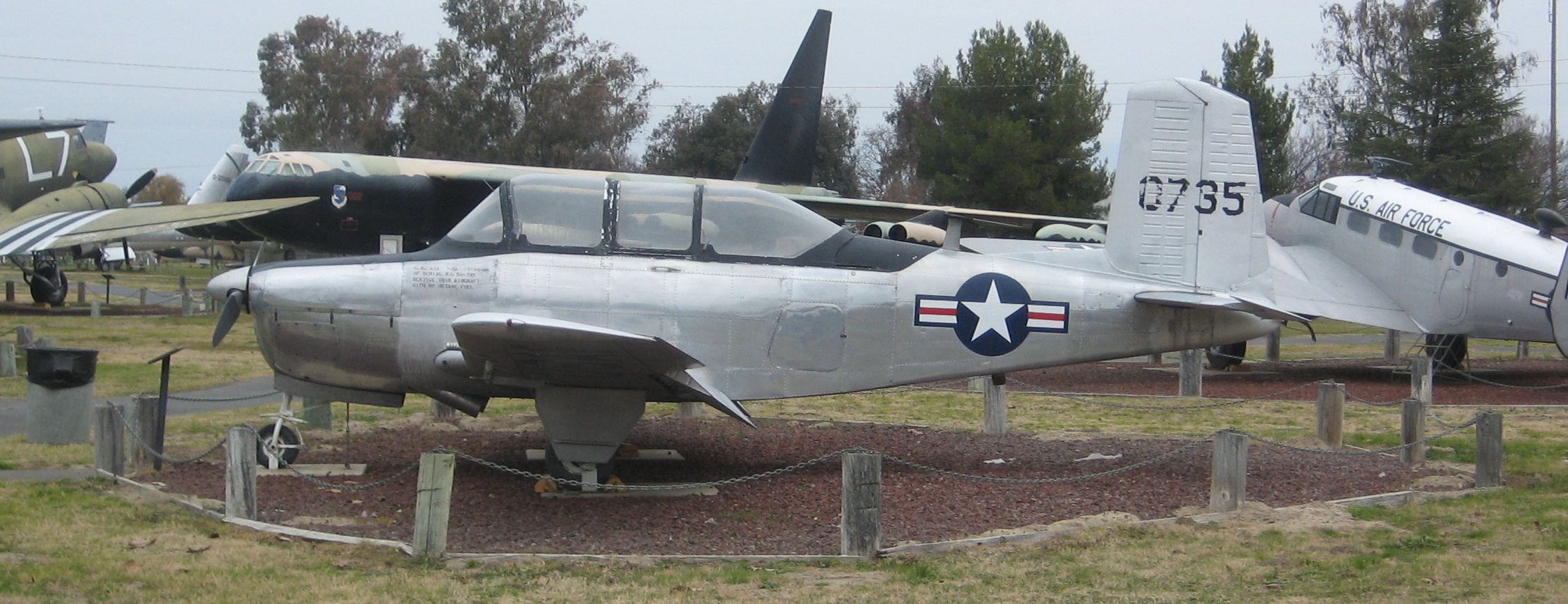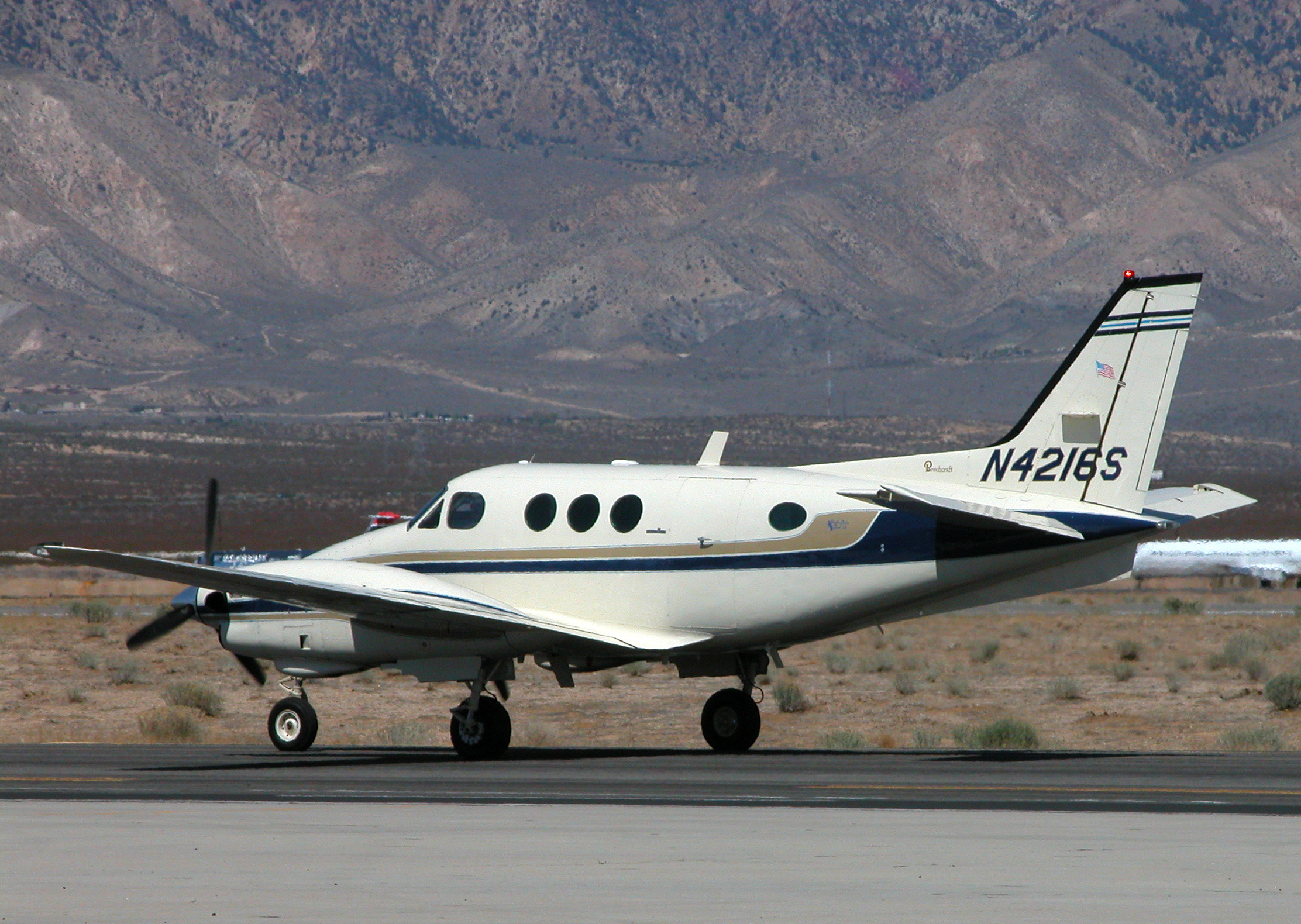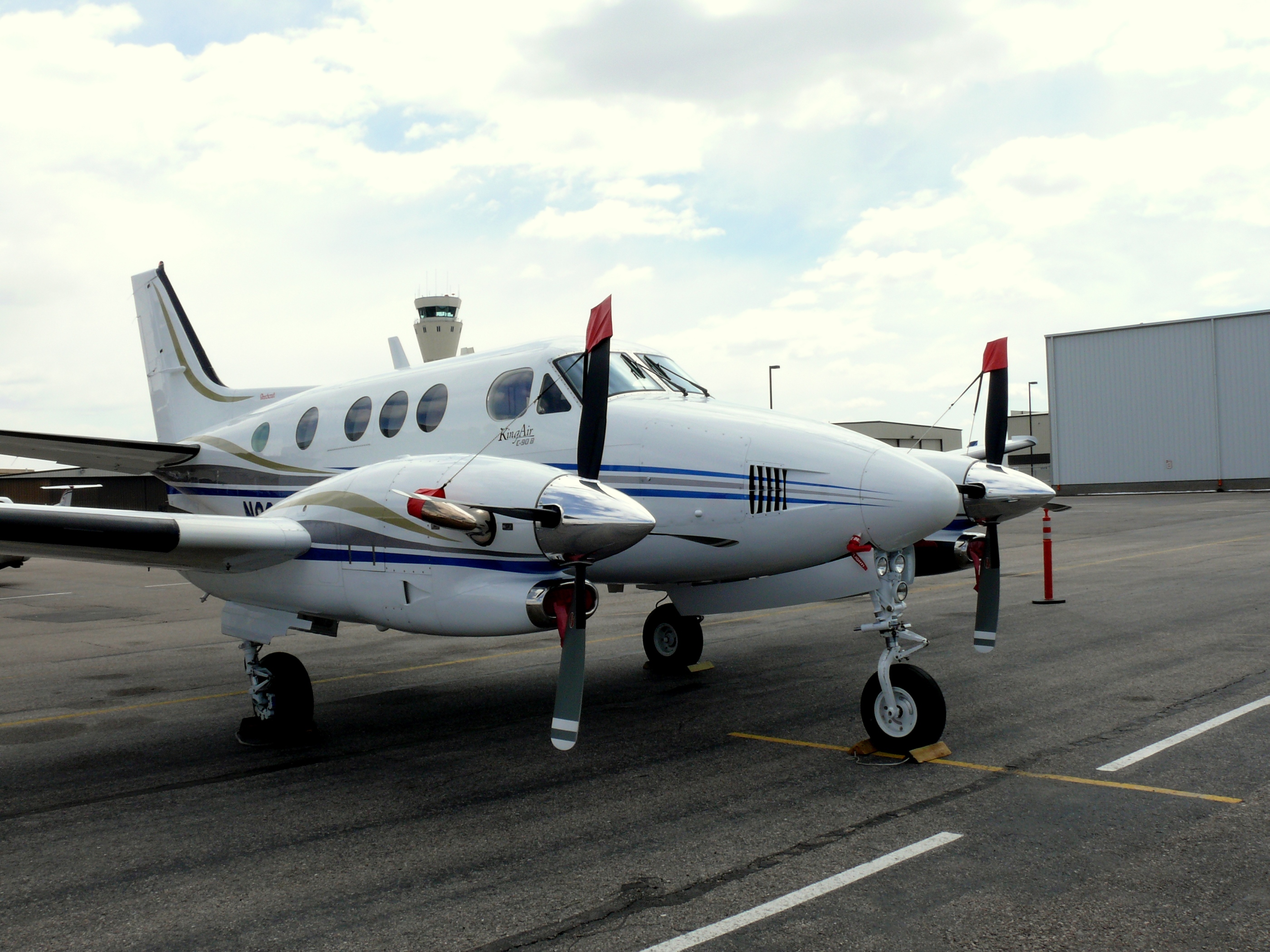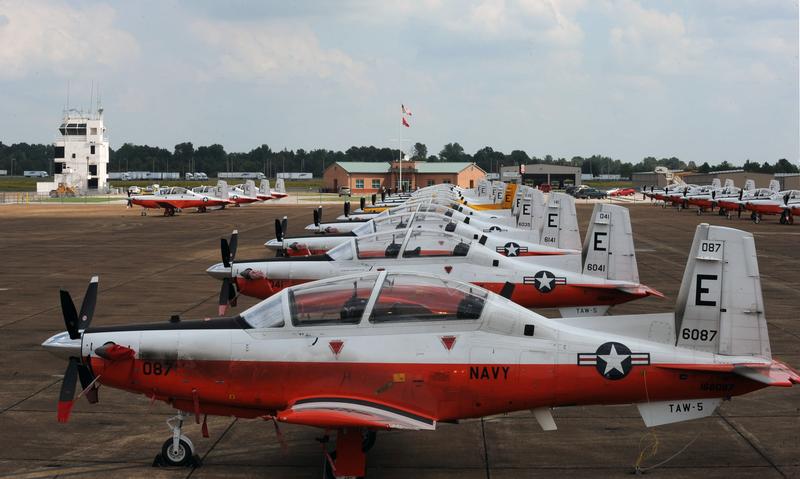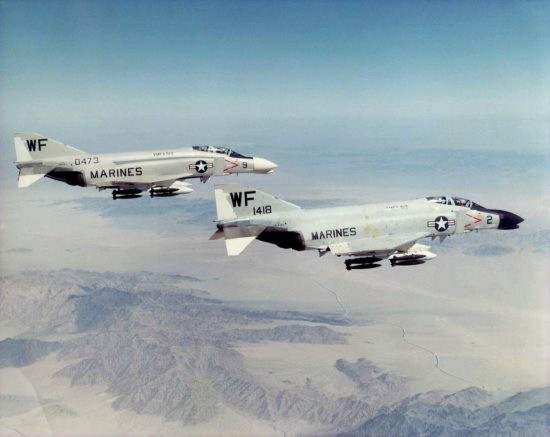|
VT-28
The VT-28 "Rangers" is a U.S. Navy primary flight training squadron based at Naval Air Station Corpus Christi, Texas. History VT-28 was initially established as Advanced Training Unit 611 (ATU-611). The Rangers began as an advanced multi-engine training squadron flying the S2F-1T, a training variant of the Grumman S-2 Tracker. On May 1, 1960 ATU-611 was redesignated VT-28 and in September 1962 its aircraft was redesignated the TS-2A in accordance with the 1962 United States Tri-Service aircraft designation system. After decades of use and the designation of thousands of Naval Aviators, the TS-2A was replaced with the T-44A Pegasus twin-engine turboprop trainer in 1979. VT-28 continued training advanced multi-engine aviators until 1990 when the Chief of Naval Air Training (CNATRA) reassigned the squadron to be responsible for training instructors and updating training syllabi for the T-44A and T-34C Turbo Mentor. Three years later, CNATRA again reassigned VT-28, this time ... [...More Info...] [...Related Items...] OR: [Wikipedia] [Google] [Baidu] |
List Of United States Navy Aircraft Squadrons
This is a list of active United States Navy aircraft squadrons. ''Deactivated'' or ''disestablished'' squadrons are listed in the List of inactive United States Navy aircraft squadrons. Navy aircraft squadron (aviation), squadrons are composed of several aircraft (from as few as about four to as many as about a dozen), the officers who fly them, the officers and sailors who maintain them and administrative support officers and sailors. Some of the units listed in this article are not technically "squadrons", but they all operate U.S. Navy aircraft in some capacity. Squadrons and their history are listed in the ''Dictionary of American Naval Aviation Squadrons'' (DANAS). Squadron organization Active duty squadrons are typically Time commanded by a Commander (United States), commander. Second in command is the executive officer (XO), also a commander. The XO typically assumes command of the squadron after approximately 15 months. There are typically four functional departments – ... [...More Info...] [...Related Items...] OR: [Wikipedia] [Google] [Baidu] |
NAS Corpus Christi
Naval Air Station Corpus Christi is a United States Navy naval air base located six miles (10 km) southeast of the central business district (CBD) of Corpus Christi, in Nueces County, Texas. History A naval air station for Corpus Christi had been proposed since the mid-1930s, and the city's congressman, Richard M. Kleberg, supported it. But it remained a low priority construction project for the U.S. Navy as late as January 9, 1940. (The Kleberg family and Roy Miller both supported Vice President John Nance Garner's quest for the 1940 presidential nomination.) Rep. Lyndon B. Johnson made himself a key Texas ally of President Franklin D. Roosevelt's bid for a third term, and the White House told the Navy Department to consult Johnson, and heed his advice, on Navy contracts in Texas. By February 1940, the project was on the Navy's preferred list. Brown & Root, a Houston firm, shared the construction contract with another New Deal supporter, Henry Kaiser; the president ... [...More Info...] [...Related Items...] OR: [Wikipedia] [Google] [Baidu] |
Naval Air Station Corpus Christi
Naval Air Station Corpus Christi is a United States Navy naval air base located six miles (10 km) southeast of the central business district (CBD) of Corpus Christi, in Nueces County, Texas. History A naval air station for Corpus Christi had been proposed since the mid-1930s, and the city's congressman, Richard M. Kleberg, supported it. But it remained a low priority construction project for the U.S. Navy as late as January 9, 1940. (The Kleberg family and Roy Miller both supported Vice President John Nance Garner's quest for the 1940 presidential nomination.) Rep. Lyndon B. Johnson made himself a key Texas ally of President Franklin D. Roosevelt's bid for a third term, and the White House told the Navy Department to consult Johnson, and heed his advice, on Navy contracts in Texas. By February 1940, the project was on the Navy's preferred list. Brown & Root, a Houston firm, shared the construction contract with another New Deal supporter, Henry Kaiser; the president ... [...More Info...] [...Related Items...] OR: [Wikipedia] [Google] [Baidu] |
Grumman S-2 Tracker
The Grumman S-2 Tracker (S2F prior to 1962) was the first purpose-built, single airframe anti-submarine warfare (ASW) aircraft to enter service with the United States Navy. Designed and initially built by Grumman, the Tracker was of conventional design — propeller-driven with twin radial engines, a high wing that could be folded for storage on aircraft carriers, and tricycle undercarriage. The type was exported to a number of navies around the world. Introduced in 1952, the Tracker and its E-1 Tracer derivative saw service in the U.S. Navy until the mid-1970s, and its C-1 Trader derivative until the mid-1980s, with a few aircraft remaining in service with other air arms into the 21st century. Argentina and Brazil are the last countries to still use the Tracker. Design and development The Tracker was intended as a replacement for the Grumman AF Guardian, which was the first purpose-built aircraft system for ASW, using two airframes for two versions, one with the detecti ... [...More Info...] [...Related Items...] OR: [Wikipedia] [Google] [Baidu] |
T-34C Turbo Mentor
The Beechcraft T-34 Mentor is an American propeller-driven, single-engined, military trainer aircraft derived from the Beechcraft Model 35 Bonanza. The earlier versions of the T-34, dating from around the late 1940s to the 1950s, were piston-engined. These were eventually succeeded by the upgraded T-34C Turbo-Mentor, powered by a turboprop engine. The T-34 remains in service more than seven decades after it was first designed. Design and development The T-34 was the brainchild of Walter Beech, who developed it as the Beechcraft Model 45 private venture at a time when there was no defense budget for a new trainer model. Beech hoped to sell it as an economical alternative to the North American T-6/SNJ Texan, then in use by all services of the U.S. military. Three initial design concepts were developed for the Model 45, including one with the Bonanza's signature V-tail, but the final design that emerged in 1948 incorporated conventional tail control surfaces for the benefit ... [...More Info...] [...Related Items...] OR: [Wikipedia] [Google] [Baidu] |
Naval Air Training Command
The Naval Air Training Command (NATRACOM) is a one star command that conducts flight training of student Naval Aviators, and Naval Flight Officers. Though it does not conduct Naval Aircrew training which is conducted by Naval Education and Training Command's Naval Aviation Schools Command (NASC), it is responsible for monitoring the production of Aircrewmen through the Naval Aviator Production Process (NAPP). Through the NAPP, NATRACOM is also responsible for programming and monitoring the production of all (currently 19) Navy and Marine Corps Fleet Replacement Squadrons. It conducts operations aboard five Naval Air Stations in three states. The Mission of Naval Air Training Command is to train the world’s finest combat quality aviation professionals, delivering them at the right time, in the right numbers, and at the right cost. Commanded by RDML Robert D. Westendorff, the Chief of Naval Air Training (CNATRA), CNATRA and NATRACOM are headquartered on board Naval Air Statio ... [...More Info...] [...Related Items...] OR: [Wikipedia] [Google] [Baidu] |
United States Department Of The Navy Seal
United may refer to: Places * United, Pennsylvania, an unincorporated community * United, West Virginia, an unincorporated community Arts and entertainment Films * ''United'' (2003 film), a Norwegian film * ''United'' (2011 film), a BBC Two film Literature * ''United!'' (novel), a 1973 children's novel by Michael Hardcastle Music * United (band), Japanese thrash metal band formed in 1981 Albums * ''United'' (Commodores album), 1986 * ''United'' (Dream Evil album), 2006 * ''United'' (Marvin Gaye and Tammi Terrell album), 1967 * ''United'' (Marian Gold album), 1996 * ''United'' (Phoenix album), 2000 * ''United'' (Woody Shaw album), 1981 Songs * "United" (Judas Priest song), 1980 * "United" (Prince Ital Joe and Marky Mark song), 1994 * "United" (Robbie Williams song), 2000 * "United", a song by Danish duo Nik & Jay featuring Lisa Rowe Television * ''United'' (TV series), a 1990 BBC Two documentary series * ''United!'', a soap opera that aired on BBC One from 1965-19 ... [...More Info...] [...Related Items...] OR: [Wikipedia] [Google] [Baidu] |
Beechcraft King Air
The Beechcraft King Air is a line of American utility aircraft produced by Beechcraft. The King Air line comprises a number of twin-turboprop models that have been divided into two families. The Model 90 and 100 series developed in the 1960s are known as King Airs, while the later T-tail Model 200 and 300 series were originally marketed as Super King Airs, with the name "Super" being dropped by Beechcraft in 1996 (although it is still often used to differentiate the 200 and 300 series King Airs from their smaller stablemates). The King Air was the first aircraft in its class and was produced continuously from 1964 to 2021. It outsold all of its turboprop competitors combined. It has recently faced competition from jet aircraft such as the Embraer Phenom 100, Honda HA-420 HondaJet and Cessna Citation Mustang; as well as from newer turboprop aircraft including the Piaggio P180 Avanti, and single-engine Piper Malibu Meridian, Pilatus PC-12, and Socata TBM. Development Mod ... [...More Info...] [...Related Items...] OR: [Wikipedia] [Google] [Baidu] |
T-44A
The Beechcraft King Air is a line of American utility aircraft produced by Beechcraft. The King Air line comprises a number of twin-turboprop models that have been divided into two families. The Model 90 and 100 series developed in the 1960s are known as King Airs, while the later T-tail Model 200 and 300 series were originally marketed as Super King Airs, with the name "Super" being dropped by Beechcraft in 1996 (although it is still often used to differentiate the 200 and 300 series King Airs from their smaller stablemates). The King Air was the first aircraft in its class and was produced continuously from 1964 to 2021. It outsold all of its turboprop competitors combined. It has recently faced competition from jet aircraft such as the Embraer Phenom 100, Honda HA-420 HondaJet and Cessna Citation Mustang; as well as from newer turboprop aircraft including the Piaggio P180 Avanti, and single-engine Piper Malibu Meridian, Pilatus PC-12, and Socata TBM. Development Mo ... [...More Info...] [...Related Items...] OR: [Wikipedia] [Google] [Baidu] |
Beechcraft T-6 Texan II
The Beechcraft T-6 Texan II is a single-engine turboprop aircraft built by the Raytheon Aircraft Company (Textron Aviation since 2014). A trainer aircraft based on the Pilatus PC-9, the T-6 has replaced the United States Air Force's Cessna T-37B Tweet and the United States Navy's T-34C Turbo Mentor. The T-6A is used by the United States Air Force for basic pilot training and Combat Systems Officer (CSO) training, the United States Navy and United States Marine Corps for primary Naval Aviator training and primary and intermediate Naval Flight Officer (NFO) training, and by the Royal Canadian Air Force (CT-156 Harvard II designation), Greek Air Force, Israeli Air Force (with the "Efroni" nickname), and Iraqi Air Force for basic flight training. The T-6B is the primary trainer for U.S. student naval aviators (SNAs). The T-6C is used for training by the Mexican Air Force, Royal Air Force, Royal Moroccan Air Force, and the Royal New Zealand Air Force. Design and development The ... [...More Info...] [...Related Items...] OR: [Wikipedia] [Google] [Baidu] |
1962 United States Tri-Service Aircraft Designation System
The Tri-Service aircraft designation system is a unified system introduced in 1962 by the United States Department of Defense for designating all U.S. military aircraft. Previously, the U.S. armed services used separate nomenclature systems. Under the tri-service designation system, officially introduced on 18 September 1962, almost all aircraft receive a unified designation, whether they are operated by the United States Air Force (USAF), United States Navy (USN), United States Marine Corps (USMC), United States Army, or United States Coast Guard (USCG). Experimental aircraft operated by manufacturers or by NASA are also often assigned designations from the X-series of the tri-service system. The 1962 system was based on the one used by the USAF between 1948 and 1962, which was in turn based on the type, model, series USAAS/USAAC/USAAF system used from 1924 to 1948. The 1962 system has been modified and updated since introduction. History The Tri-Service system was first e ... [...More Info...] [...Related Items...] OR: [Wikipedia] [Google] [Baidu] |
Naval Aviator
Naval aviation is the application of military air power by navies, whether from warships that embark aircraft, or land bases. Naval aviation is typically projected to a position nearer the target by way of an aircraft carrier. Carrier-based aircraft must be sturdy enough to withstand demanding carrier operations. They must be able to launch in a short distance and be sturdy and flexible enough to come to a sudden stop on a pitching flight deck; they typically have robust folding mechanisms that allow higher numbers of them to be stored in below-decks hangars and small spaces on flight decks. These aircraft are designed for many purposes, including air-to-air combat, surface attack, submarine attack, search and rescue, matériel transport, weather observation, reconnaissance and wide area command and control duties. Naval helicopters can be used for many of the same missions as fixed-wing aircraft while operating from aircraft carriers, helicopter carriers, destroyers and f ... [...More Info...] [...Related Items...] OR: [Wikipedia] [Google] [Baidu] |




